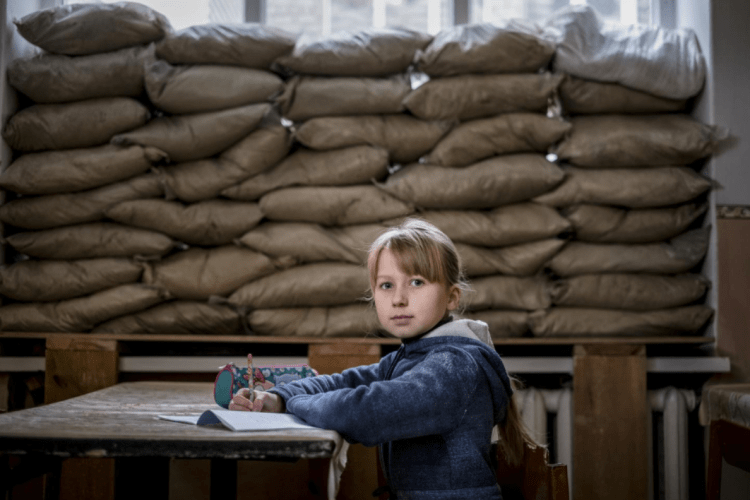Written By: Kathleen Scarola
The beginning of Russia’s ongoing attempt to invade Ukraine started February 24, 2022, and since then millions of lives have been affected in some of the worst ways possible. This past November, US officials have estimated that Moscow’s casualties were well over 100,000 and that Ukraine’s forces have “probably” seen casualties in the same range. In addition, approximately as many as 40,000 Ukrainian civilians and 16% of all children have been killed. Ukrainian refugees have sought refuge in neighboring countries such as: Belarus, Poland, Slovakia, Hungary, Romania, Bulgaria, etc. as well as in the US.
Across the country, targeted strikes from Russian forces on power facilities, fuel storage depots, and water works have left many without water, heating or electricity. Ukraine’s national power company, Ukrenergo, declared that damage to energy installations is so sizable that as much as 50% of the energy demand cannot be met and that as many as 6 million people will be left without electricity. These losses are becoming increasingly hard as temperatures dip below zero, and school aged children struggle to keep up with online learning methods.
The consequences this conflict has had on the people of Ukraine has clearly led to the destruction and disruption of normal day-to-day life, especially with education within the country. There are roughly 5.7 million school aged children within Ukraine, many of which have been struggling to resume regular learning routines and systems. If one were to imagine what the regular child went through during Covid, this is drastically worse than that.
However, as of September 2022 approximately four million children returned to school despite the odds against them. The majority have been working through online learning because in most cases the school building has been destroyed as a result of bombing or it’s too close to the fighting. Since September 2, 2022 roughly 2,400 schools have been damaged and 269 have been completely destroyed. All state run schools are online due to official mandates – despite this, online learning is still challenging because of the energy shortages.
The schools that do offer in person learning are required to have adequate bomb shelters. It goes without a doubt that many of these children are facing traumas, but teachers as well as other support groups have been assisting children in whatever ways they can.
Groups such as UNICEF have been working with education systems in Ukraine and other countries hosting Ukrainian refugees to provide them with creative, flexible learning options that combine high and low tech options capable of reaching all children to minimize learning disruptions. As refugees continue to integrate into neighboring countries, the majority of families have chosen to opt for an online learning option, meaning that two out of three Ukrainian children were not enrolled in host country’s education systems.
With the measures being taken by Ukrainian officials as well as outside social service organizations, it is hopeful that the young people affected by this calamity will be able to maintain some sense of stability in their academic journeys.

